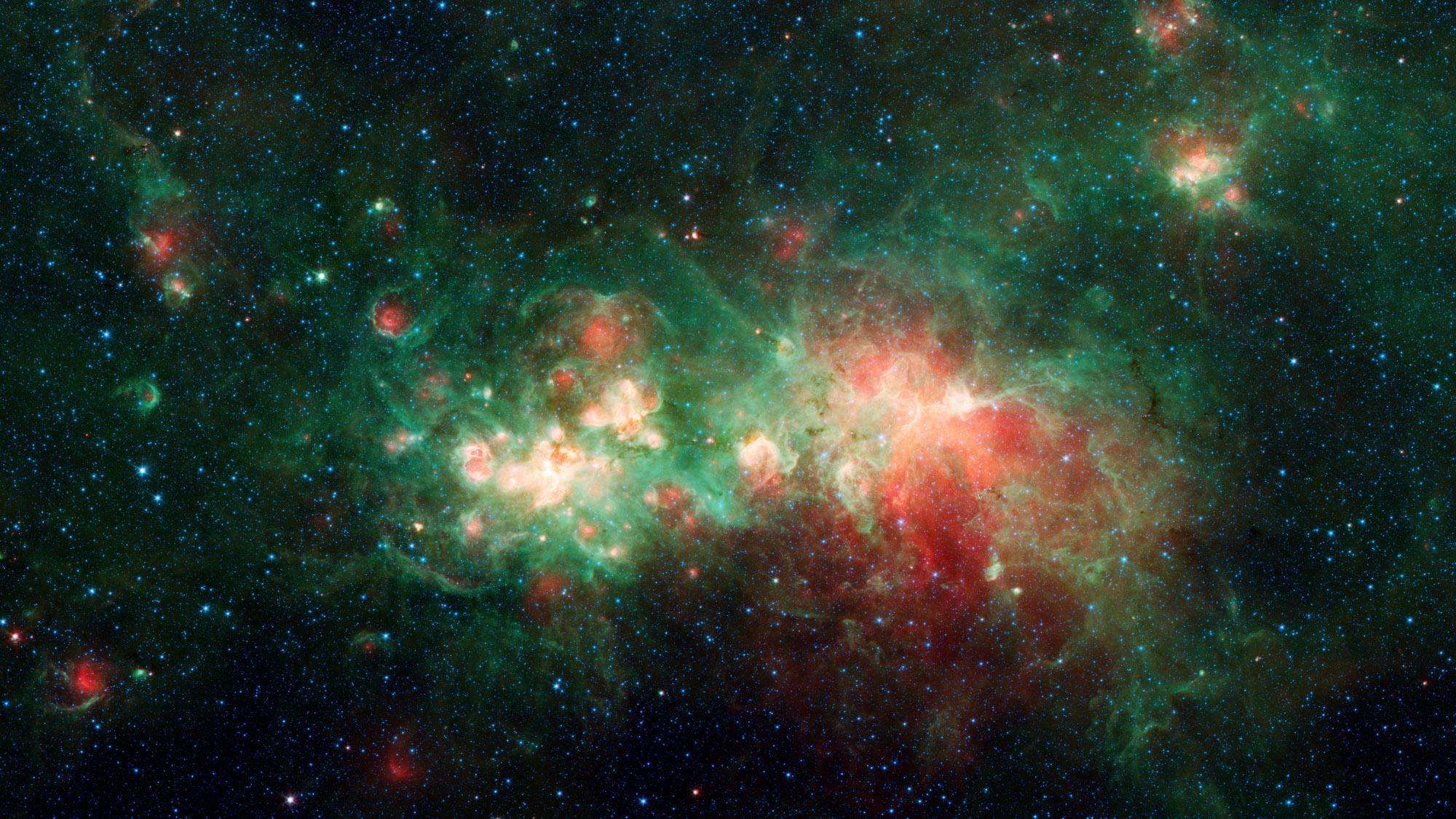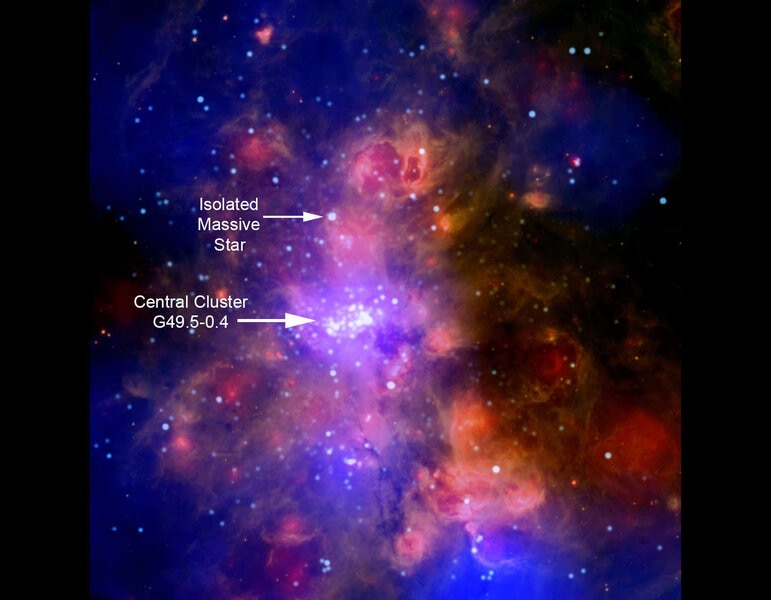Create a free profile to get unlimited access to exclusive videos, sweepstakes, and more!
Star formation is beautiful and terrifying

I do love a good nebula.
This is the term astronomers use for vast clouds in space, made of either gas or dust (tiny grains of rock or soot made when stars die). They come in many varieties. Some are rapidly expanding debris clouds from supernovae, exploding stars. Some are small and dark, sometimes called Bok globules. Others are wispy and sprawling, or lit both by reflection and their own internal excitation by nearby hot stars.
And some, oh my yes some, are immense clouds of both gas and dust so massive that not just stars but clusters of stars are born inside them. Thousands of stars.
One such star-forming region is called W51. It was discovered decades ago, and at roughly 17,000 light years from Earth is one of the closest big examples of such a star factory. It's located in an area of the galaxy that's choked with dust, so thick it's opaque to visible light. W51 is therefore best seen in infrared — that kind of light, outside the range our eyes can see, can penetrate the dust and make its way to Earth.
The Spitzer Space Telescope was one of NASA's flagship space observatories, watching the sky in infrared light for over 16 years. Before the end of its mission in early 2020 it observed the ridiculously magnificent gas cloud W51, and what it saw is just, well, ridiculously magnificent.
YeGADS. What a thing to see!
The colors represent different wavelengths of infrared light, which in turn show different temperature material in the nebula; blue is warmest and red coolest. The infrared color mapped to green in the image tends to come from what are called polycyclic aromatic compounds, or PAHs, which are long chains of carbon molecules that really are similar to soot.
W51 is enormous, about 350 light years across, and this image covers over a half a degree of sky, the apparent width of the full Moon. By coincidence this is also about the same size as the more familiar Orion Nebula, but that's much closer to us at roughly 1,300 light years. Orion is amazing, but it's small compared to W51; it would look like one of the small bright patches in the Spitzer image.
W51 has two main sections, split here left and right. The main difference is how long stars have been forming in the two. On the right, stars started forming long ago. When massive ones are born they blow powerful winds that scoop up the gas and dust around them like a plow through snow, opening up cavities in the cloud. The red material fills the cavity, giving the image a sense of three dimensions.
On the left star formation hasn't been going on as long, so the cavities are still small. In a couple of million years the left side may very well look like the one on the right does now as more luminous stars are born.
X-rays can penetrate the dust as well, and observations by the Chandra X-ray Observatory show that massive stars tend to be born in clusters in W51, though some do seem to exist on their own. Young massive stars emit X-rays through a variety of processes, including those same powerful winds (which are driven by magnetic fields, which are a common culprit when we see X-rays coming from the sky). Sometimes two stars orbit each other on long elliptical orbits, and when the two stars swing together at the closest part of their orbit their winds collide as well, and that can generate powerful X-ray emission.
Observations indicate that tens of thousands of stars are bring born in W51, and clearly show an age range to them, meaning star formation has occurred over a long period of time spanning several million years. And it's not done yet; there is still enough gas and dust in the cloud to form many, many more stars.
There will come a time, perhaps a few billion years hence, when the gas in the Milky Way is used up; all the stars that can form will already have formed. The gas tank — a fun coincidental etymological metaphor — will run empty, and that will be that for newborn stars. But that is eons into the future, and for now we still live in a very fecund galaxy.
I'm glad we do. I love seeing stars in the sky, and I very much love seeing images of the spectacular nurseries where they're made.




























